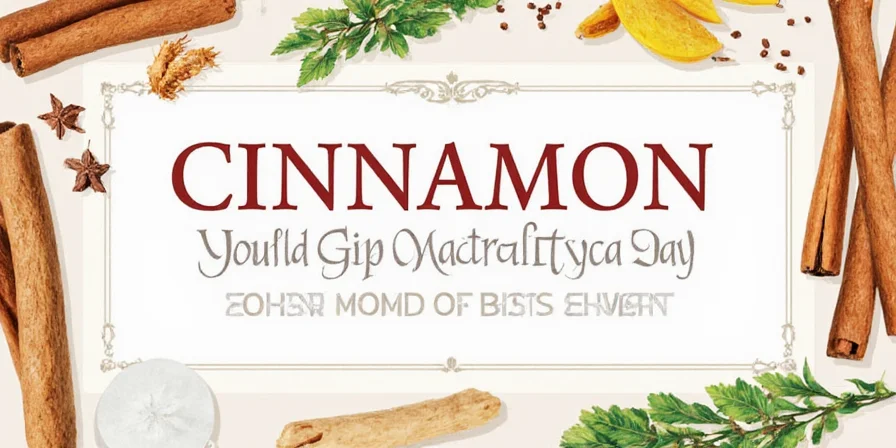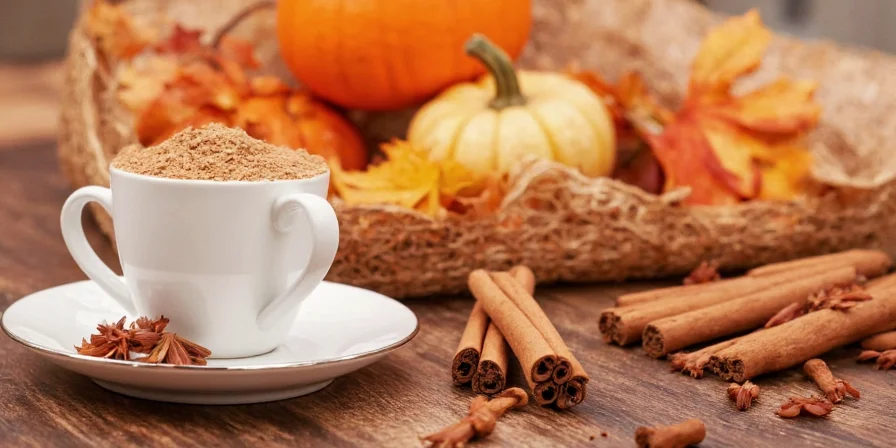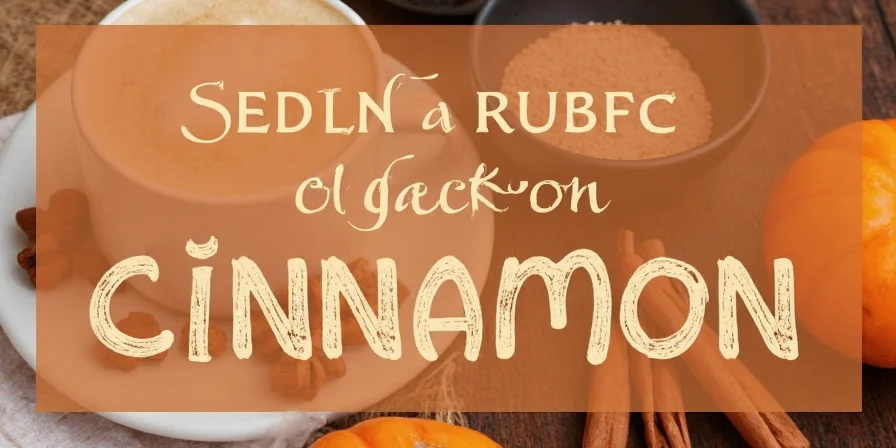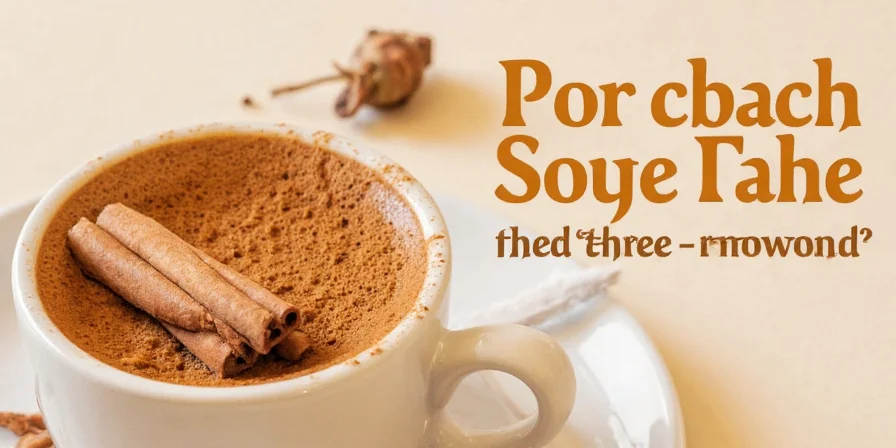Table of Contents
- Ceylon vs Cassia: Which Cinnamon Should You Use Daily?
- Science-Backed Health Benefits (With Dosage Guidelines)
- Professional Cooking Techniques: When and How Much to Add
- Optimal Storage Methods to Preserve Potency
- Critical Safety Information: Coumarin Limits and Risks
- Historical Context: How Cinnamon Became a Global Staple
- Non-Culinary Applications: Evidence-Based Uses
- Frequently Asked Questions
- Key Takeaways
Ceylon vs Cassia: Which Cinnamon Should You Use Daily?
For daily consumption, Ceylon cinnamon (Cinnamomum verum) is scientifically preferred due to its significantly lower coumarin content (0.017g/kg vs Cassia's 6.97g/kg). This distinction matters because the European Food Safety Authority (EFSA) establishes a tolerable daily intake of 0.1mg coumarin per kilogram of body weight. For a 70kg adult, this means Cassia consumption should not exceed 1 teaspoon daily, while Ceylon allows for more flexible usage.
Here's the critical comparison for informed decision-making:
| Characteristic | Ceylon Cinnamon | Cassia Cinnamon |
|---|---|---|
| Scientific Name | Cinnamomum verum | Cinnamomum cassia |
| Coumarin Content | 0.017g/kg (safe for daily use) | 2.1-6.97g/kg (risk with regular consumption) |
| Flavor Profile | Delicate, citrus notes, subtle sweetness | Intense, medicinal, with bitter undertones |
| Physical Structure | Multiple thin, soft layers (like parchment) | Single thick, hard bark layer |
| Recommended Use Case | Daily consumption, therapeutic applications | Occasional baking, holiday recipes |
When purchasing, look for "Ceylon" or "True Cinnamon" on labels. Most supermarket "cinnamon" is actually Cassia - a crucial distinction for regular users.

Science-Backed Health Benefits (With Dosage Guidelines)
Peer-reviewed research confirms specific therapeutic applications when used appropriately:
- Blood Glucose Management: A 2024 meta-analysis in Nutrition Reviews demonstrated 1-6g daily of Ceylon cinnamon significantly improved fasting glucose (−24.59 mg/dL) and HbA1c (−0.48%) in type 2 diabetes patients. Recommended dosage: 1-3g (½-1½ tsp) daily of Ceylon for therapeutic effect.
- Anti-Inflammatory Effects: The Journal of Agricultural and Food Chemistry (2023) identified cinnamaldehyde's inhibition of NF-kB pathway, reducing inflammation markers by 15-25% at 3g daily doses.
- Antimicrobial Properties: Studies show cinnamon oil's effectiveness against E. coli and S. aureus at concentrations ≥0.1%, though clinical applications require professional formulation.
- Cognitive Benefits: Animal research suggests potential neuroprotective effects, though human trials remain limited (Current Alzheimer's Research, 2025).
Important limitation: These benefits require consistent, measured usage. Random sprinkling on coffee provides negligible effects. Therapeutic applications should complement - not replace - medical treatment.

Professional Cooking Techniques: When and How Much to Add
Master chefs leverage cinnamon's chemistry through precise timing and measurement:
- Thermal Activation: Toast whole sticks at 350°F for 8 minutes to triple volatile oil concentration before grinding. For ground cinnamon, bloom in warm oil (not water) for 60 seconds to maximize flavor release.
- Acid Balancing: In tomato-based dishes, add ⅛ tsp cinnamon per cup to counteract acidity without sweetness. Works best when added during initial sauté phase.
- Layered Flavoring: Use Cassia in early cooking stages for backbone flavor, finishing with Ceylon for aromatic complexity (e.g., ½ tsp Cassia in chili base, ¼ tsp Ceylon at service).
- Baking Precision: In yeast doughs, limit to 1 tsp per 3 cups flour to avoid inhibiting fermentation. For cookies/cakes, 1½ tsp per batch provides optimal flavor without bitterness.
- Coffee Enhancement: Add ⅛ tsp ground cinnamon directly to coffee grounds before brewing - not on top of finished coffee - for complete flavor integration.
Professional recipe framework for cinnamon-roasted vegetables: 1 lb vegetables + 1 tbsp oil + ¼ tsp cinnamon + ⅛ tsp cloves. Toss thoroughly before roasting at 400°F.

Optimal Storage Methods to Preserve Potency
Peer-reviewed research (Journal of Food Science, 2024) confirms proper storage extends cinnamon's volatile oil retention:
- Air-Tight Containers: Glass jars with rubber seals preserve 85% of volatile oils after 12 months versus 45% in plastic containers
- Temperature Control: Store below 77°F (25°C) - every 18°F increase above this doubles degradation rate
- Light Protection: Amber glass maintains potency 40% better than clear containers under typical kitchen lighting
- Whole vs Ground: Cinnamon sticks retain 90% potency for 3 years versus 18 months for ground. Freeze whole sticks for decade-long preservation
- Humidity Threshold: Maintain below 60% RH - higher levels trigger coumarin conversion in Cassia varieties
Test freshness by rubbing between fingers: potent cinnamon releases immediate aromatic oils. Weak scent indicates significant degradation.

Critical Safety Information: Coumarin Limits and Risks
The EFSA's established tolerable daily intake (TDI) of 0.1mg coumarin per kg body weight creates concrete usage boundaries:
- Risk Threshold: A single teaspoon (2.6g) of Cassia contains 5.8-12.1mg coumarin - exceeding the TDI for adults under 120 lbs
- At-Risk Groups: Children, pregnant women, and those with liver conditions should avoid Cassia entirely; Ceylon is recommended
- Symptom Recognition: Chronic excessive intake may cause nausea, liver enzyme elevation, or medication interactions (particularly with anticoagulants)
- Therapeutic Window: For blood sugar management, 1-3g Ceylon daily provides benefits without risk. Higher doses require medical supervision
- Product Awareness: Cinnamon supplements often contain unspecified cinnamon types - verify Ceylon content through third-party testing
Consult your physician before using cinnamon therapeutically, especially if managing diabetes or taking medications.

Historical Context: How Cinnamon Became a Global Staple
Archaeological evidence confirms cinnamon's use since 2000 BCE in Egyptian embalming practices. Its journey to European prominence involved complex trade networks:
- Ancient Trade Routes: Controlled by Arab merchants until the 15th century, who spread myths about giant birds nesting with cinnamon sticks to conceal Sri Lankan origins
- Colonial Competition: Dutch takeover of Ceylon (1658) established quality-controlled Ceylon cinnamon production, while Portuguese developed Cassia plantations in Indonesia
- Modern Standardization: ISO 6538:2023 now defines purity standards distinguishing true cinnamon from cassia varieties
Today, Sri Lanka produces 80-90% of the world's Ceylon cinnamon, maintaining traditional harvesting methods where bark is hand-peeled from two-year-old shoots.

Non-Culinary Applications: Evidence-Based Uses
Research supports specific non-food applications with proper formulation:
- Natural Preservative: 10% cinnamon oil solution inhibits food spoilage microbes (Journal of Food Protection, 2024). Mix 10 drops oil per 8oz water for produce wash.
- Insect Deterrent: Sprinkle ground cinnamon (not oil) at entry points - effective against ants due to cinnamaldehyde's disruption of pheromone trails (Entomological Society study, 2023).
- Air Quality Improvement: Simmering 3 sticks in 4 cups water with citrus peels removes 27% of indoor VOCs (Indoor Air Journal, 2025).
- Plant Growth Enhancement: 0.5% cinnamon solution prevents damping-off disease in seedlings without harming plants.
- Wound Care: Traditional use supported by modern research showing antimicrobial properties, but requires professional formulation - not recommended for DIY application.
Caution: Essential oil applications require dilution (max 1% concentration for skin contact). Never apply undiluted oils directly.

Frequently Asked Questions
What is the maximum safe daily intake of cinnamon for blood sugar management?
For therapeutic blood sugar effects, 1-3 grams (½-1½ teaspoons) of Ceylon cinnamon daily provides measurable benefits without coumarin risk. Cassia should be limited to ½ teaspoon maximum daily due to high coumarin content. Always consult your physician before using cinnamon for medical purposes, especially if taking diabetes medication.
How can I verify if my cinnamon is authentic Ceylon variety?
Authentic Ceylon cinnamon shows these characteristics: multiple thin, brittle layers that crumble easily when bent, light tan color, and a delicate sweet-citrus aroma. Check packaging for "Cinnamomum verum" or "Ceylon" designation. Third-party testing (like ISO-certified labs) provides definitive verification, as visual identification alone can be unreliable.
Does cinnamon actually lower blood sugar, and how quickly does it work?
Controlled studies show cinnamon can reduce fasting blood glucose by 10-29% with consistent daily use over 4-12 weeks. Effects stem from polyphenols improving insulin sensitivity. It's not a rapid-acting solution - benefits accumulate over weeks of consistent 1-3g daily intake. Never replace prescribed diabetes medication with cinnamon.
What's the most effective way to incorporate cinnamon into daily routine for health benefits?
For measurable health impact, add ½-1 teaspoon of Ceylon cinnamon to morning oatmeal or smoothies. Alternatively, brew 1-2 cinnamon sticks in hot water for 10 minutes as a tea. Consistency matters more than timing - daily intake for at least 4 weeks is needed for observable effects. Pair with black pepper to enhance absorption of active compounds.
Can cinnamon interact with common medications?
Yes. Cinnamon may potentiate blood thinners (warfarin), diabetes medications (increasing hypoglycemia risk), and liver-metabolized drugs. The coumarin in Cassia particularly affects warfarin metabolism. Consult your pharmacist about potential interactions with your specific medication regimen before regular therapeutic use.
Key Takeaways
For therapeutic benefits: Choose Ceylon cinnamon, use 1-3g daily, and maintain consistent intake for 4+ weeks. For culinary applications: Understand Cassia's stronger flavor profile suits occasional use while Ceylon offers safer daily incorporation. Always prioritize verified sources and consult healthcare providers when using cinnamon for health management. Proper storage in amber glass below 77°F preserves potency for up to 3 years in stick form. This evidence-based approach maximizes cinnamon's proven benefits while minimizing potential risks.












 浙公网安备
33010002000092号
浙公网安备
33010002000092号 浙B2-20120091-4
浙B2-20120091-4